Looking for advice on camera gear
Hi everyone!
I am looking to upgrade my camera gear for our trip to Bolivia in a couple of months. I have been asking around and have been advised to go for canon R5, R6 or R7, but i am happy to be convinced for a different brand. I have been using a compact sony camera until now and have found a lot of noise even during daylight pictures with mammals not too far off so i really want to be able to feel the upgrade.
From my research, R7 with a 100-500 mm should be good enough for daylight picture , it’s lighter to travel and it’s cheaper, but i would struggle with pictures when spotlighting at night (does anybody have experience with this camera while spotlighting?) whereas the full frame R5 and R6 mkII with a 200-800 mm lens will capture better the light in low light conditions but will have less battery usage and will be more expensive and heavy. I understand from reading previous posts in here that many of you use the R5 and R6 so any proper experience with the camera and lenses including spotlighting at night will be appreciated.
My intended budget would be around 4000 euros for camera plus lens but could be higher if the difference in quality is noticeable and it’s a camera i could use for many years to come.
Thank you!
Post author
9 Comments
-
Nathan Myhrvold
Sebastian’s advice is great! He knows what it he is talking about! I have tried to go spotlighting with a canon 100-500 RF lens. At the 100mm end it is at f/4.5 which is OK, but the focal length is too short. At the long (500mm) end you are at f/7.1. In is possible to get some good photos, but I find it frustrating because the lens is slow and that will effect both the shutter speed but just as (maybe more) important, the focusing time – or even ability to reach focus. Higher iso from low noise cameras helps with shutter speed, (the Photoshop noise reduction helps with noise from high iso). But high iso does nothing for a case where you can’t achieve focus. The faster lenses that Sebastian recommends will be better than the 100-500 as a result. But note that during the day the 100-500 is a very versatile lens. One suggestion that i have is to bring a better flashlight. I have traveled through most of the tpantanal and also quite a bit in Chile, and all over Africa, India and Borneo. With one or two exceptions guides my experience is that guides don’t have great flashlights/spotlights. The Fenix LR35R is very small and compact so it’s easy to travel with, and is fine for spotlighting as long as you keep it on low until you need more light – otherwise the batter run time is short. The Fenix LR50R and LR80R are even bigger – more light and longer run time. So if the guide has a weak flashlight / spotlight I hand them my light. This will make at least a 1 stop and sometimes 2 stop difference in light output. So, my advice is that in addition to camera and lens, invest in a decent light. There are other brands of flashlights – a bewildering variety in fact – but I mainly use Fenix.
-
Lennartv
I wouldn’t worry too much about the overheating of the R5 unless you plan to do a lot of video. I have used it for several years in all kinds of environments and I have only had one example of the camera showing signs of overheating. It’s not really an issue if you mainly take photo’s.
R7 is a very affordable camera, but ISO performance is not great and I know AF is a little bit behind the R5.
Both will struggle with focus in low light. The new R5II and R1 are much better. So if you are considering Canon and you have some time, you might want to wait for the R6III or R7II which will most likely be out at the end of this year or in 2026.
The 3 brands all have their pro’s and cons. I have made the decision to invest in Canon because they consistently come out ahead in terms of AF and speed (and also have a focus on reducing noise). Also their ergonomics and building quality are very good. However Sony invests more in high megapixel camera’s and is also very innovative while Nikon has a great lens line-up. Every brand offers interesting options. If you want to get a better idea of what each camera might offer you regarding wildlife I would recommend the Youtube channel of Jan Wegener. It is focused on bird photography, but you will more or less need the same qualities for mammal photography.
-
Ben S
I currently use a Canon R5 mk II with a 100-500 RF lens and a 430 speedlite on a flash bracket. I’ve also gotten great results with the R5 mk I (I’ve never had trouble with overheating), though the AF on the mk II is noticeably better. See the more recent photos on my website http://www.tremarctos.com.
-
Dr. Wolverine
While I am not extremely knowledgeable in the Canon field, there are some extremely good budget options from the Nikon side.
The new Z5ii has the latest updates, and has many of the same features as the higher priced Z6iii, which I use. The Z5ii share many of the same characteristics as the Z6ii mentioned above, however it boasts the newest processor EXPEED 7, with more advanced Autofocus with the option of Bird detect AF. The autofocus is much quicker, though much of the elements such as sensor size and resolution are very similar. The only field where the Z6ii would be more beneficial is with video, however if your main objective is photographs, this shouldn’t be a big issue. This camera is also very good in low light, making it a significant upgrade from the original Z5.
The Z5ii body costs around €1900 (It may be cheaper on the second hand market)
For Lenses, I would highly recommend the Nikkor Z 180-600 f/5.6-6.3 VR, which is similar to its Canon counterpart. However, the Nikon version could be more beneficial. I currently use this lens, and it is amazing. Very sharp and
– Longer focal length (600mm over 500mm)
– Internal Zoom, meaning the lens doesn’t extend when zooming so less chance of dust or water entering
– Potentially better vibration reduction
– Faster Autofocus (though only slightly)The 180-600 costs around €1859
While I don’t know if the details listed above are enough to switch brands, I can assure you that both the body and the lens is very capable in the field of wildlife. Low light handling is great on the Z5ii, and its affordability as an ‘entry level camera’ (though it certainly doesn’t feel like one) makes it an excellent budget option for a full frame mirrorless camera. The 180-600 is also an extremely well-played product by nikon, and it certainly feels like it should cost more. It is very sharp for a zoom lens, and the internal zoom feature is very useful in many situations.
I used to use the Sigma 150-600 Contemporary before upgrading, and the AF speed and sharpness has improved greatly.Here are some photos I took with the 180-600 on the Z6iii.
https://www.instagram.com/dr.wolverinethebirdwatcherguy/ -
Dr. Wolverine
As a Nikon user, I can offer some great budget options.
Body: Z5ii
The New Nikon Z5ii boasts much of the same characteristics as the Z6ii mentioned above, however it is more budget friendly, and may be a better option than the Z6ii in terms of features.It has the newest processor EXPEED 7, opposed to the EXPEED 6 on the Z6ii. This means it has better AF, better tracking capabilities, and a faster readout speed.
The Z5ii also has a longer battery life, and more features such as a fully articulating screen, more focus points, and Bird detect AF. This camera was just released on April 3rd of this year, so it has much more recent upgrades. It is a full frame mirrorless camera that Nikon labels as an ‘entry level’, though its advanced features make it far better than what it is worth. It is also great at handling low light, even in nocturnal spotlighting situations. Burst rate is 14fps RAW and 30fps JPEG.Z5ii – €1900 (though it is cheaper on the second hand market)
Lens: Z 180-600 f/5.6-6.3 VR
I currently use this lens, and I love it. I used to use the SIGMA 150-600 Contemporary, however I have found it to be a massive upgrade.
This lens has an internal zoom, meaning the lens doesn’t extend when switching from 180 to 600 or anywhere in between. Furthermore, the jump from 180-600 is extremely quick, and can be done in a quarter of a rotation. This is very useful in the field when needing to switch focal lengths in a heartbeat. The internal zoom also means that there is less chance for dust to enter (though the lens is already weather sealed).The canon counterpart, 100-500 RF, is lighter and more portable however I believe the 180-600 has better features that make it more desirable. The 180-600 has a longer focal length, internal zoom, slightly faster autofocus, and potentially better Vibration Reduction. It is also extremely sharp for a zoom lens, even at 600mm. Here is my instagram page with some photographs I took with this lens (on the Z6iii) https://www.instagram.com/dr.wolverinethebirdwatcherguy/
The Z 180-600mm f/5.6-6.3 costs around €2000 (Again, cheaper in the second hand market)
Overall, while Canon is an amazing system, Nikon’s current lineup is definitely worth looking into! There are some very advanced budget friendly options now, which may have better features than other more expensive products.
Leave a Reply
You must be logged in to post a comment.


Sebastian Kennerknecht
Hey Eduardo,
Since we lead photo tours all around the world, focused on wild cats, including spot lighting, I put out my thoughts below (I personally use a Sony A1 with a 600mm f/4) so as you can see from the below I am not biasing Sony.
Best Overall System for €4000: Nikon Z6 II + NIKKOR Z 400mm f/4.5 VR S
1. Nikon Z6 II (Full-frame mirrorless)
Sensor: 24.5MP full-frame BSI CMOS — excellent low-light performance.
Burst rate: 14 fps.
AF system: Very capable with good subject tracking and eye detection for animals (after firmware updates).
Price: ~€1800 (body only)
2. NIKKOR Z 400mm f/4.5 VR S
Focal length: 400mm prime (600mm equivalent with 1.5x crop mode).
Aperture: f/4.5 — fast enough for low light, especially with a full-frame sensor.
Weight: Lightweight for a super-tele (approx. 1.25 kg).
Sharpness and stabilization: Excellent.
Price: ~€2500
Total: ~€4300
Depending on region and rebates, you may find this combo just below €4000, especially with cashback or used gear.
Alternative Option: Sony a7 IV + Sigma 150-600mm DG DN OS Sports
1. Sony a7 IV
33MP full-frame sensor — very good in low light and more resolution for cropping.
AF: Industry-leading animal eye AF and tracking.
Burst: 10 fps.
Price: ~€2500
2. Sigma 150-600mm f/5-6.3 DG DN OS Sports
Excellent sharpness, stabilisation, and reach.
Slower aperture than the Nikon 400mm f/4.5, but better range (150–600mm).
Price: ~€1450
Total: ~€3950
Better focal range, world-class autofocus. Slightly less ideal in low light due to aperture.
Budget-Focused but Solid: Canon R6 (used) + RF 100-500mm f/4.5-7.1L
Canon R6 (used or discounted): Fantastic low-light AF and image quality.
~€1600 used
Canon RF 100-500mm f/4.5-7.1L IS USM: Sharp, versatile, great IS.
~€2700
Total: ~€4300, but the R6’s low-light performance is among the best.
The R5 overheats very quickly, the R7 is crop sensor, so doesn’t do as well in low light. Happy to talk more about all this if you like.
Thanks,
Sebastian